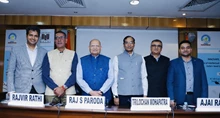
The bench, which also included judicial members Justice Sudhir Agarwal and Justice Arun Kumar Tyagi, as well as expert members A Senthil Vel and Afroz Ahmad, stated that the tribunal's previous orders regarding river Yamuna pollution had not been followed.
"The estimated gap is 194.5 million gallons per day (MGD) of sewage, interception and diversion of approximately 147 drains (connected to Najafgarh and Shahdra drains) and other small drains connecting bigger drains remains (pending), and wastewater from 1,799 unauthorised colonies and 630 JJ clusters is reportedly going into the Yamuna," the bench stated. Other unfinished projects include the DDA's riverfront development projects and drain desilting or desludging, according to the bench.
According to data from the Delhi Pollution Control Committee, the river Yamuna's water quality showed high levels of biological oxygen demand (BOD) and innumerable numbers of faecal coliform. "Having multiple authorities in Delhi may be one of the reasons for our lack of success thus far. There appears to be a lack of accountability and ownership. A lot of money has already been spent with no results, and judicial oversight has been going on for almost 29 years," the green panel said.
The DPCC did not take coercive measures against erring industries or local governments that 'rampantly' discharged waste into the Yamuna and drains, according to the tribunal. "There appears to be a reluctance to collect the necessary charges required for remedial measures and the adoption of an effective methodology for pollution prevention, and the availability of funds may be an excuse for not preventing pollution," the tribunal stated.
It stated that beautifying floodplain zones and dense plantations could significantly improve the aesthetics of the national capital. "A huge amount of public money has already been spent without much results and without accountability, as noted by the Supreme Court in the context of Yamuna, and additional expenditure must be incurred with a sense of responsibility, ensuring tangible results," the tribunal said.
The green panel stated that trees should be planted on river flood plains and drain buffer zones, in addition to engineering, structural, and biological measures for a comprehensive catchment area treatment plan. "There is also a need to consider using treated sewage water for agriculture or other purposes, discouraging the use of chemical fertiliser and insecticides to the extent feasible, and eco-technology may be used to maintain and restore the ecological integrity of the river Yamuna," it said.
"We have formed a high-level Committee (HLC) of concerned authorities in Delhi, where Yamuna pollution is higher (about 75%) than in other river basin states. "We request that the Lieutenant Governor... chair the committee," said the tribunal. Members of the committee would also include the chief secretary, secretaries from various Delhi government departments, the CEO of the Delhi Jal Board, DDA officials, top officials from the Union ministries of Agriculture, Jal Shakti, and Environment, the chairman of the Central Pollution Control Board, and the director general of the National Mission for Clean Ganga (NMCG).
The committee must meet physically within one week to assess the situation in relation to the tribunal's directions, the extent of compliance, proposed corrective action, sources of funding, accountability for past failures, and methodology for project execution and timelines, according to the tribunal. "The committee may explore provision for separate channels for carriage of sewage instead of mixing the same with stormwater," the bench said adding, "the committee may ensure that de-sludged or dredged material is disposed of as per norms at the earliest, preventing re-entry in the river and damage to the flood plains.
The committee's success will be measured by the reduction of pollution, and the committee's targets must be measurable and identifiable, according to the tribunal. The committee was required to submit its first report by January 31, according to the tribunal. The NGT was hearing a petition regarding the pollution of the Yamuna River, which claimed that despite specific orders from the Supreme Court and the NGT, the authorities involved had consistently failed to take adequate remedial measures.











